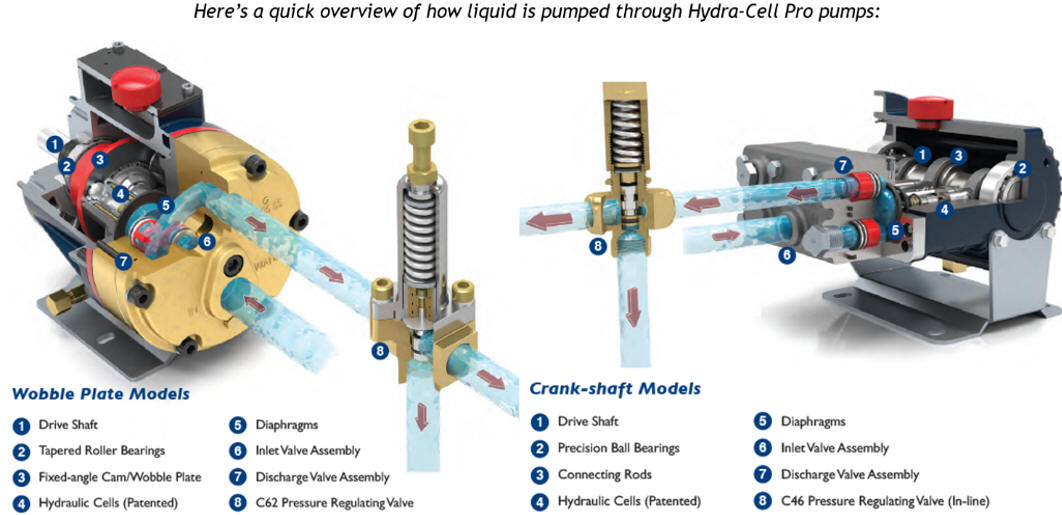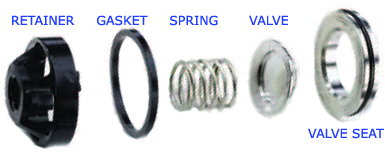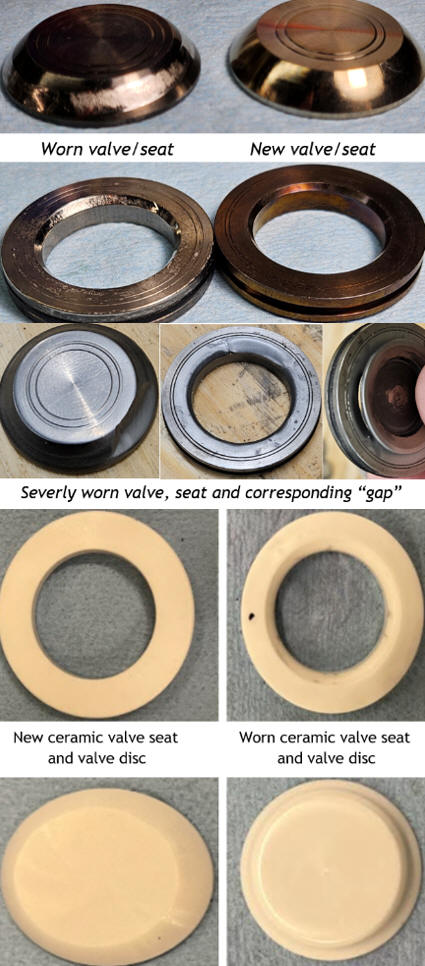Wanner™
Hydra-Cell®
Pro Sealless Positive Displacement Pumps:
Check Valve Wear Insights
Wanner™ Hydra-Cell® Pro sealless positive displacement pumps are quite unique industrial pumps; their non-dynamic seal design enables them to pump “challenging liquids” more reliably than piston, plunger, gear and progressing cavity style pumps. The primary wear component for Hydra-Cell® Pro pumps are their check valve assemblies, and more specifically the valve disc and seats.
Previous articles have compared pump designs and addressed important
aspects such as repair, troubleshooting and lubrication:
Past Articles
-
Comparison of Hydra-Cell Pro metering pump to an External gear pump
-
Comparison of Hydra-Cell Pro pump to AODD (Air Operated Double Diaphragm pump)
-
Comparison of Hydra-Cell Pro pump to Piston and Plunger pumps
-
Comparison of Hydra-Cell Pro pump to Progressive Cavity Pumps
-
Hydra-Oil: role and importance of oil used in Hydra-Cell Pro pumps
This article will focus solely on the check valves used in the liquid end of the pump.

The only components exposed to the pumped liquid are the check valve
assemblies, the diaphragms and o-rings. Check valve assemblies are comprised
of a valve seat, valve disc, spring, gasket and retainer.

The retainer seals the flow path though the check valve assembly by
compressing the gasket and likewise compresses the spring to push the valve
against the valve seat; it also acts as a guide for the spring, which in
conjunction with the machined valve disc, helps position the spring and
valve against the valve seat. Thus, with proper material compatibility and
without upset conditions, the main component wear point is the interface
between the valve disc and seat.
Each pump chamber has a pair of
check valves installed in the valve plate to control the flow path from a
common inlet channel to a common outlet channel within the pump manifold.
Each shaft rotation causes an increase and then decrease of the pump chamber
volume, drawing in and pushing out liquid. Hydra-Cell Pro pump shafts are
operated as high as 1750 RPM, equating to 1750 check valve openings and
closings per minute.
Normal Valve/Seat Wear
Impact of the valve disc against its valve seat physically wears away
material from both components. When pumping liquids containing few
particulates and using heat-treated stainless-steel valve/seat material, one
can expect to receive about 6000 hours of use before the valve/seat wear
sufficiently to result in a rough running pump.
As the valve/seat
wear, their ability to efficiently seal against each other diminishes. The
loss of material eventually leads to gaps between the valve/seat.
Simultaneously the spring tension is reduced so the reaction time is not as
quick.
This manifests itself as a rough running pump because the flow
rate is less smooth, with some of the discharge pushed into the inlet
manifold with each stroke. You will hear a louder pump, like a “clanking
noise” and you will notice the discharge pressure can vary considerably, a
reflection of the varying volume of liquid displaced due to the poor seating
between valve and seat.
Wear tends to be exponential; perhaps smooth
operation for the initial 6000 hours, to minor rough running for a few
hundred hours and then extremely rough operation follows.
Some
applications are sensitive to flow and pressure fluctuations and monitoring
of those characteristics enables a proactive approach to replacing the check
valves before performance deteriorates to an unacceptable level.
Pumping
liquids which chemically attack the check valve material accelerates wear of
the valve disc and seat and could also damage the valve spring or retainer.
Hydra-Cell Pro pumps are renowned for their reliability of pumping
reclaimed liquids and slurries containing hard particulates. Examples of
such liquids are lime slurry, spray drying ceramic slip, airless paint
spraying, bentonite clay injection and waxy resins – such materials
accelerate check valve and seat wear. Replacing the check valve assemblies
is usually accomplished within 1-2 hours, it doesn’t necessitate removing
the entire pump from the system and the cost of the check valve kit is much
less expensive when compared to wear components of other types of positive
displacement pumps.
 Wear Forces Against the Valve Discs and
Seats
Wear Forces Against the Valve Discs and
Seats
The low mass, high-speed check valve design, using a valve
disc instead of a solid ball, is needed for efficient operation at full pump
capacity.
The main wear forces contributing to valve and seat wear
are:
-
Impact: the physical interaction of the valve pushed against its seat, which can be as high as 29 times/second (@1750 RPM) and includes wear of hard particles caught between the two sealing surfaces.
-
Erosion: a combination of the velocity through the check valve throughout its opening and closing cycle, along with the hardness of particulate impacting across the valve and valve seat surfaces.
-
Stress: uniform pitting of valve and seat surfaces, caused by a cavitation-like effect as the valve disc physically approaches impact with the valve seat. This is usually not observable as strictly “stress wear”, because it is a contributing factor to impact wear. It is also possible to stress the valve and seat materials chemically and through exposure to extreme temperatures.
Ways to Extend Check Valve Wear Life
If you have an
existing pump system and want to increase wear life of your check valves,
the easiest way to do this is to upgrade to a harder or more chemically
compatible material. The standard check valve material is 17-4 (heat
treated) stainless steel. If the liquid pumped is suspected of being
chemically aggressive to 17-4 SS, you may try 316L SS Nitronic 50 or
Hastelloy C materials. If the pumped liquid is a slurry or contains hard
particles, ceramic and tungsten carbide materials are harder and more
resistant to erosive wear.
The “best time” to maximize your valve
wear life is when initially sizing your system. For example, comparing the
model D10 (8.8 GPM @ 1750 RPM) and the model H25 (20 GPM @ 1200 RPM), the
model H25 pump will resist erosive wear better when operated at 506 RPM (8.8
GPM) than the model D10 which needs to operate 3½ times faster for the same
flow rate. The is due to the H25 pump having physically larger check valves,
thus at the low flow rate of 8.8 GPM the velocity through these valves is
significantly reduced.
If pumping water and water-like liquids with few particulates, you can
choose a smaller size pump, operate at a higher RPM and address check valve
wear life with different materials.
When pumping slurries and
abrasive liquids, it is best to “oversize” the pump, operate at a lower RPM
and through larger check valves – in addition to using harder check valve
materials.

Hardness is not the only factor, for example the ceramic material has a
fragility aspect which the alloy materials do not; they can shatter if
dropped or subject to extreme thermal shock, so that is a consideration as
well.
Let us put our years of knowledge and experience to work for
you the next time you have a challenging pump application!




